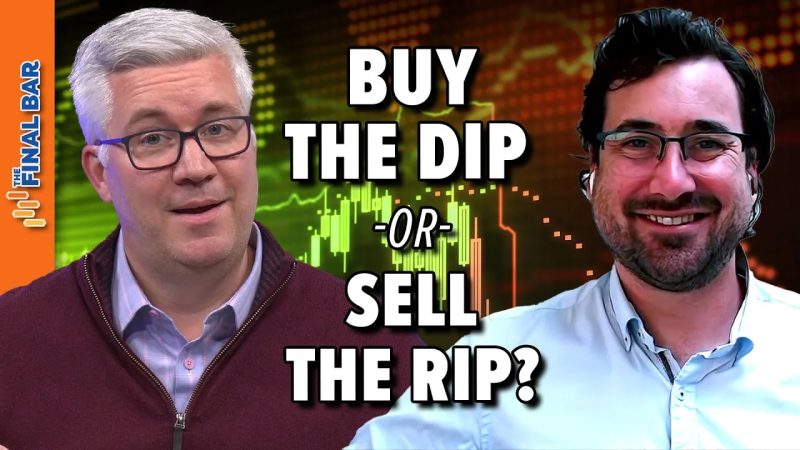Buy the Dip or Sell the Rip strategy is a common saying in the finance and investment sector. It’s a strategy used by traders looking to profit from the upswing or downswing of a particular stock, cryptocurrency, forex, ETFs, indices, or commodities. The choice between the two strategies, buying the dip or selling the rip, depends largely on the investor’s understanding of the market, patience, investment goals, and risk tolerance.
Buying the dip refers to purchasing an asset after it has experienced a significant drop in price. The philosophy behind this strategy is that when a stock or any financial instrument experiences a sharp sell-off, it will subsequently rebound and increase in value. This strategy plays on the cyclical nature of markets, as what goes down must come up. In essence, investors who buy the dip do so with the expectation that the asset’s price will recover after the decline.
There are several reasons why a price might dip. It could be due to a broad market sell-off, bearish industry news, poor earnings reports, or temporary imbalance in supply and demand. For investors, a dip should not be seen as a sign to panic, but as an opportunity to buy assets at a discount. However, it’s crucial to be able to differentiate between a temporary dip and a prolonged downturn. It also requires patience, as the asset’s value might not rebound as quickly as expected.
On the other hand, selling the rip is a trading strategy that involves selling into strength. If a stock or other assets witness a rapid increase in its price, traders who sell the rip believe that this surge will be short-lived. They will either sell the assets they already own at a higher price, or they will initiate a short position, hoping to profit when the price falls again.
This strategy is based on the principle of reversion to the mean: the belief that price and returns eventually move back towards the mean or average. The investor entering into a selling position during a rip operates on the presumption that the sudden spike is an overreaction by the market, and that the asset is currently overvalued. The risk here is that if the upward trend continues longer than expected, the trader stands the chance of incurring losses.
Whether an investor should buy the dip or sell the rip depends on a plethora of factors; some of which are investor-specific like risk appetite, investment horizons, knowledge of the market while others are market-centered like timing the market, nature of the asset, overall market sentiment.
One commonality both strategies share is the difficulty in execution. Both require a high level of understanding of market trends and the ability to predict future price movements accurately, which is no easy feat, even for experienced traders. Another shared element is the potential for high risk. If predictions are incorrect, losses can be substantial.
Also, these strategies are not mutually exclusive. Some investors may choose to both buy the dip and sell the rip, depending on the specific conditions of the market at any given time. Both approaches can be part of a well-balanced and diversified investment strategy.
In conclusion, deciding whether to buy the dip or sell the rip depends mainly on one’s market perspective, investment goals and risk tolerance. Neither strategy is inherently better than the other; they simply cater to different types of investors with different aims. Ultimately, successful implementation of either strategy requires a deep understanding of market trends, thorough research and careful risk management.




